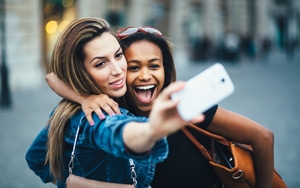
Multicultural growth has rocketed in the U.S. in the past 10 years.
Multicultural growth has rocketed in the U.S. in the past 10 years. According to a recent study by Neilsen, 92% of the total growth in U.S. population from 2000 to 2014 came from multicultural groups. Hispanics, African-Americans, Asian-Americans and all other multicultural consumers make up 38% of the U.S. population.
The growth in the multicultural population size is driving advertisers to realize they need to spend more time with them, because it’s also a growth in buying power.
African-American and Hispanic teens are more likely to use the Internet on their phones “almost constantly” at 34% and 32% respectively, according to a Pew research poll.
Reaching those segments is crucial for any marketer looking to build a well-rounded strategy. But the multicultural millennial affinity for and familiarity with the capabilities of smartphones, has blossomed into a demand for a seamless experience with advertisements.
The fast-growing Hispanic millennial market is one of the most sought after segments in the multicultural world, with a new generation of publications tailored to their needs springing up.
Some brands are starting to shift tactics from more specific multicultural marketing to total marketing. While total marketing may work for larger brands the belief is that marketing works best when you target based on needs and passions, and that consumers appreciate when advertisers take the time to get to know them.
With census projections showing that multicultural populations will become a numeric majority by 2044, the advertising world is going to have to get to know the multicultural market very well.
